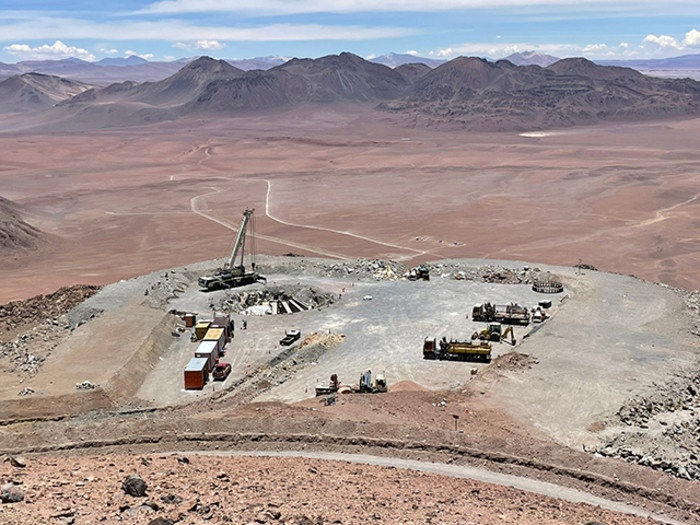CCAT Observatory Cologne Data Center
The CCAT Observatory is a facility that is currently under construction at 5,612 meters on Cerro Chajnantor in the Chilean Atacama Desert. After completion of the construction in 2024, it will host the Fred Young Submillimeter Telescope (FYST), a 6-meter diameter submillimeter to millimeter wavelength telescope.
The FYST is a submillimeter telescope designed to investigate the early universe, galaxy formation and evolution, and dark matter properties. With its ability to map the cosmos in submillimeter wavelengths, CCAT will make valuable contributions to past, current, and future work of other telescopes like Herschel, SOFIA, or ALMA and SKA, ultimately improving our understanding of the structure and evolution of the universe.
It is being developed by CCAT Observatory Inc., an international scientific consortium consisting of several institutions, including Cornell University, the University of Cologne, the University of Bonn, the Max-Planck-Institut für Astrophysik, and the Canadian Atacama Telescope Consortium.
The FYST was officially presented at Xanten, Germany, on April 4, 2024. It will remain there for the rest of the year for further development before being shipped to its final operating site in Chile.
The innovative optical design of FYST will provide a telescope with a wide field of view and high throughput, enabling efficient and rapid sky mapping. In combination with the high precision surface of the telescope and the extraordinary atmospheric conditions at the high site, regular access to the 350 micron wavelength range will be available, and if the weather is optimal, even observations at 200 microns become possible. The submillimeter and millimeter wavelength light that FYST will measure is close to the infrared part of the light spectrum and provides astronomers with valuable information about the Milky Way, local galaxies, the Epoch of Reionization, and Cosmology.
The CCAT Observatory Cologne Data Center at RRZK
The University of Cologne and the University of Bonn actively participate in the CCAT. With their long standing expertise in instrumentation development for the millimeter to submillimeter wavelength range and operation of radio-telescopes (KOSMA, NANTEN2, SOFIA), the University of Cologne will play a critical role in the success of the CCAT observatory. Cologne develops one of the two first-light instruments to be deployed on the FYST, the CCAT Heterodyne Array Instrument (CHAI). The Universities of Cologne and Bonn, together with the Max-Planck-Institut für Astrophysik, will have access to 25% of the observing time. CHAI and the second first-light instrument Prime-Cam will have a large data rate and generate 5 PB of raw data in the first five years of operation.
The RRZK will host the CCAT Observatory Cologne Data Center. Here, the data coming from the two instruments will be securely stored, analyzed, archived, and later made available to the astronomy community. The RRZK also supports effective data transfer from the Observatory to our servers. Currently, the reduction and analysis pipelines are being developed by a research team at the Department of Physics I, University of Cologne, with the support of B3D.

RRZK researchers involved in the CCAT Observatory Cologne Data Center:
Stefan Wesner
Viktor Achter
Roland Pabel
Monica Valencia-Schneider
Contact
If you have any questions or problems, please contact the RRZK-Helpdesk